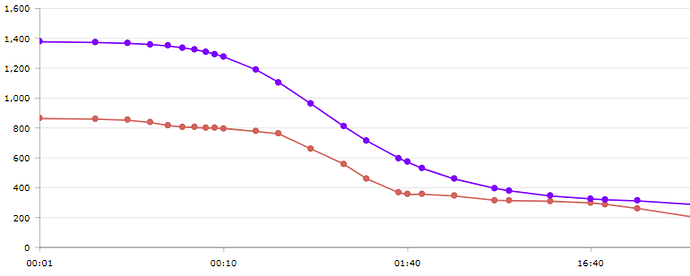Sorry if that’s what was understood. Certainly a maximal effort is needed to generate a BT!
What I mean is that your MMP data only captures what you’ve done - it can’t show would be possible for you. If your 3:45 effort was paced perfectly to the watt at exactly the maximum that you can maintain for 3:45, that’d be perfect. But many times, Breakthrough efforts are performed without being anywhere near your best MMP. And that using only MMP will miss data points where you performed an amazing effort that was performed under fatigue, which compromises your ability to generate power. IOW, it might not be your best MMP data, but after considering previous fatigue, we can show that your fitness improved, even if the effort wasn’t your best ever XYZ Mean Max Power.
I like examples! Great idea!
This was a group ride/race which consisted of 5 times around a loop which included a hard ~45s climb. The effort identified as a BT in the center of this activity was nowhere near this athlete’s best MMP on their PD curve (or even their best MMP of the day), but still represents a maximal/breakthrough effort because of the fatigue that had already been accumulated from the previous two laps.
Using only MMP, you’d never ever catch this, or identify an increase in fitness from this ride:
Here is the Power Curve from the activity, showing the athlete’s actual MMP from the activity in Red and their Modeled Power Duration Curve in Purple (derived from their fitness signature). As you can see, this athlete never once got close to their ‘best’ MMP but we were still able to detect a 10W increase in Threshold.
Hopefully a helpful example. Cheers!

